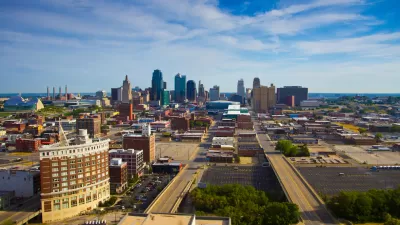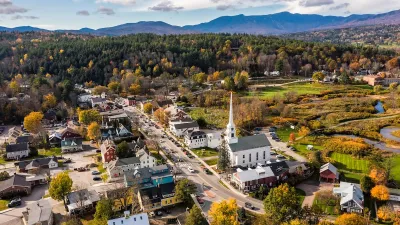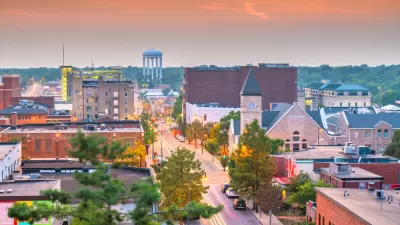Although remote work has opened up new housing possibilities for many Americans, data indicates that migration flows to 'heartland' cities have been relatively modest.

Despite hopes that the boom in remote work and "untethered" tech employees would "redistribute economic vitality more evenly across the country after a decade of excessive concentration in coastal 'superstar' cities," a joint Brookings Institution and Walton Family Foundation study by Mark Muro, Yang You, Robert Maxim, and Max Niles "raises questions about the true potential of the remote-work-driven renewal storyline."
"An April CBRE analysis on migration patterns—based on frequently updated U.S. Postal Service data—reported that while the outflow of people from dense, high-cost urban metro areas accelerated in 2020, the flows were rather modest in most cases (with the exceptions of the Bay Area, New York, and Seattle). What’s more, most of the moves were short to moderate distances, often to nearby counties—not the nation’s interior."
The report, State of the Heartland: Factbook 2018, "found that in 2020, there was a gross total of 700,000 outbound moves from the Bay Area—but only 12,000 address changes were filed for moves from the Bay Area to the 19 classic heartland states. These 12,000 moves do not seem nearly enough to significantly revitalize the region." Nationwide, the number of people moving away from large coastal cities "amount to less than 0.2% of the 125 million heartland and Mountain West population—again, not enough people to significantly revitalize the nation’s massive interior and its challenged small towns and cities." Additionally, "[r]emote work is declining rapidly, as more firms and workers prioritize at least some in-office work each week."
The authors conclude "most heartland cities should not hold their breath for quick, migration-driven turnarounds generated by the arrival of new tech or professional workers from the coasts." Rather, "regional leaders will need to continue making the kind of conscious, long-term investments that have long been the drivers of local economic growth and high standards of living."
FULL STORY: Remote work won’t save the heartland

Maui's Vacation Rental Debate Turns Ugly
Verbal attacks, misinformation campaigns and fistfights plague a high-stakes debate to convert thousands of vacation rentals into long-term housing.

Planetizen Federal Action Tracker
A weekly monitor of how Trump’s orders and actions are impacting planners and planning in America.

San Francisco Suspends Traffic Calming Amidst Record Deaths
Citing “a challenging fiscal landscape,” the city will cease the program on the heels of 42 traffic deaths, including 24 pedestrians.

Half of Post-Fire Altadena Home Sales Were to Corporations
Large investors are quietly buying up dozens of properties in Altadena, California, where a devastating wildfire destroyed more than 6,000 homes in January.

Opinion: What San Francisco’s Proposed ‘Family Zoning’ Could Really Mean
Mayor Lurie is using ‘family zoning’ to encourage denser development and upzoning — but could the concept actually foster community and more human-scale public spaces?

Jacksonville Launches First Autonomous Transit Shuttle in US
A fleet of 14 fully autonomous vehicles will serve a 3.5-mile downtown Jacksonville route with 12 stops.
Urban Design for Planners 1: Software Tools
This six-course series explores essential urban design concepts using open source software and equips planners with the tools they need to participate fully in the urban design process.
Planning for Universal Design
Learn the tools for implementing Universal Design in planning regulations.
Gallatin County Department of Planning & Community Development
Heyer Gruel & Associates PA
JM Goldson LLC
City of Camden Redevelopment Agency
City of Astoria
Transportation Research & Education Center (TREC) at Portland State University
Jefferson Parish Government
Camden Redevelopment Agency
City of Claremont





























